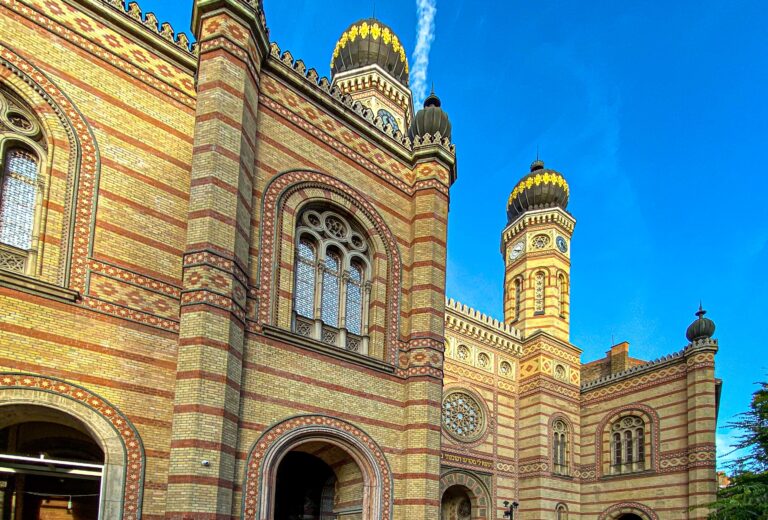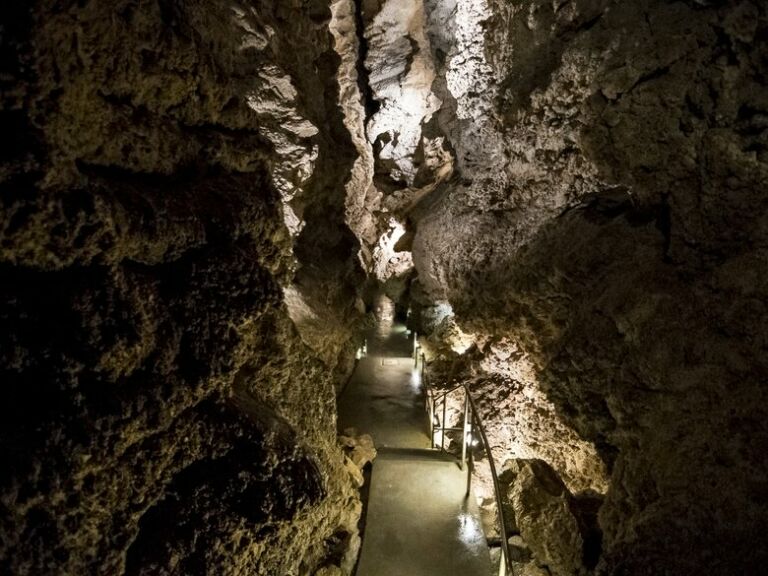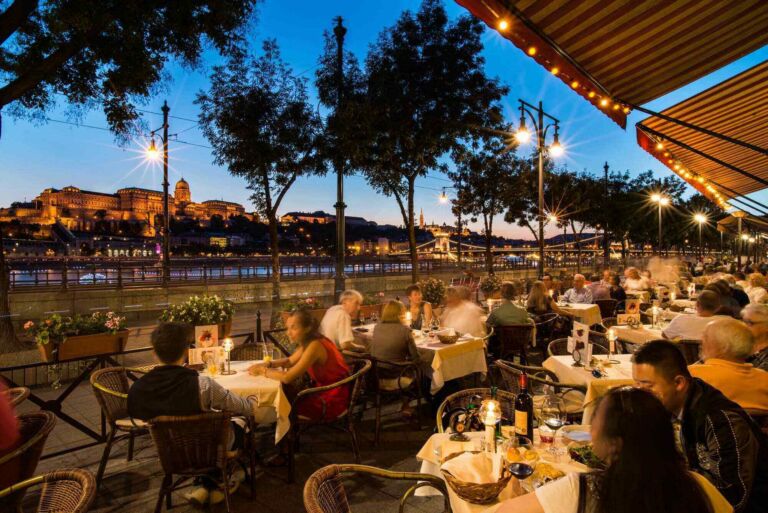Erzsébet (Elisabeth) Bridge, Budapest: a stormy past
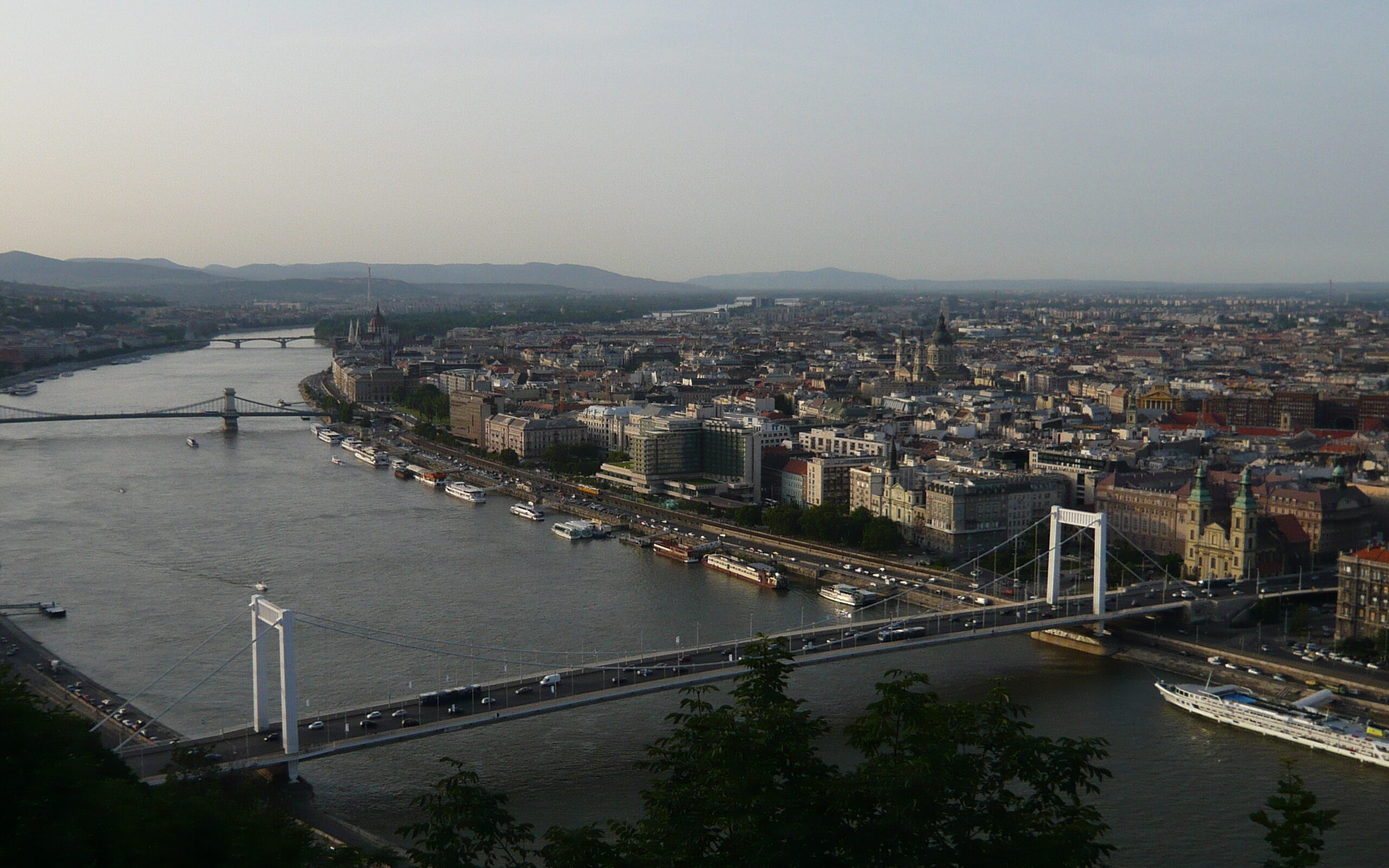
Erzsébet (Elisabeth) Bridge, Budapest: a stormy past
The origin story of a majestic bridge and its namegiver.
A beautiful, tragic empress
Erzsébet Bridge takes its name from the much-adored Empress Elisabeth of Austria, the empress of the Austro-Hungarian Empire. Elisabeth, or ‘Sissi’, as she was affectionately known, was a genuine favorite of the people of Hungary. Acknowledged all over Europe as being a great beauty, she was tragically assassinated in 1898. The bridge that had the privilege of bearing her name, was suitably alluring and worthy of her memory, but then it too became the victim of a violent act. In World War 2, as with the other bridges in Budapest, the original Erzsébet Bridge was destroyed. However, unlike the other bridges, the original structure of Erzsébet Bridge was now totally beyond repair. The original bridge was built in 1903, making it a symbol of the early 20th century, and at the time it was considered one of the most elegant bridges over the River Danube.
A controversial rebuilding
The bridge that we see today was erected in place of the original in the 1960s, but it proved instantly controversial: for many it was too minimalistic and too modern. Yes, it still bore the name of ‘Erzsébet’, but it lacked the aesthetic grace that was associated with her. But not everyone agreed. Talking to people of Budapest today, many view Erzsébet Bridge as being a neat and clean acceptance of modern functionality. Whatever anyone’s point of view on the design of Erzsébet Bridge, no one can deny that this bridge now stands out in its own right. The current structure is a cable suspension bridge with a central span of 290 meters, which at the time of its completion was one of the longest of its kind in Europe.
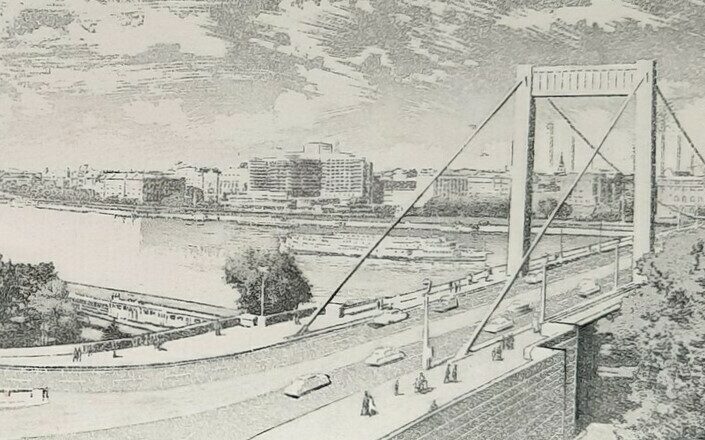
A bustling Hungarian bridge
But it has to also be admitted that Erzsébet Bridge is a central point of a very busy transport route that sweeps across the Danube. There are no places for trams on this bridge, and perhaps because of this, cars and buses roar across it, seemingly eager to get the journey over and done with as soon as possible. Of all of the bridges in central Budapest, Erzsébet Bridge is probably the one that feels the least pedestrian-friendly. Still, as the third newest bridge of Budapest, it plays a vital role in connecting Buda and Pest in modern traffic.
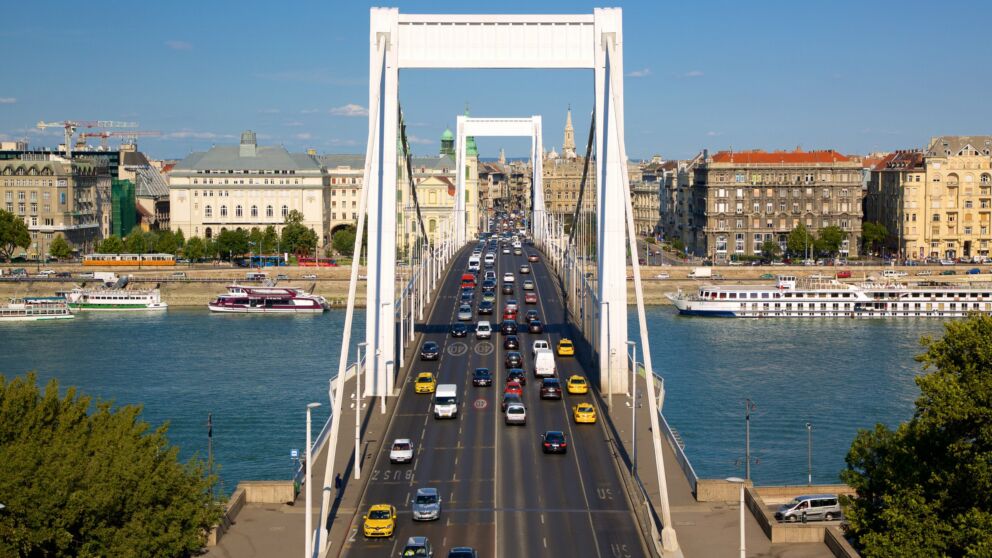
The Erzsébet Bridge with a view of Budapest
But still, it has its charm, and seen from a boat as you approach and pass underneath, it’s easy on the eye. The same is true for those approaching the bridge as they walk along the embankment. Or, from another angle, at around sunset, you can approach the bridge from Astoria, facing the ‘Square of the Franciscans’, (Ferenciek tere), and if the conditions are favorable, catch a wonderful view of the skyline turning red. On the Buda side, Erzsébet Bridge leads you directly towards the foot of Gellért Hill, one of the most iconic viewpoints of the city over the River Danube.
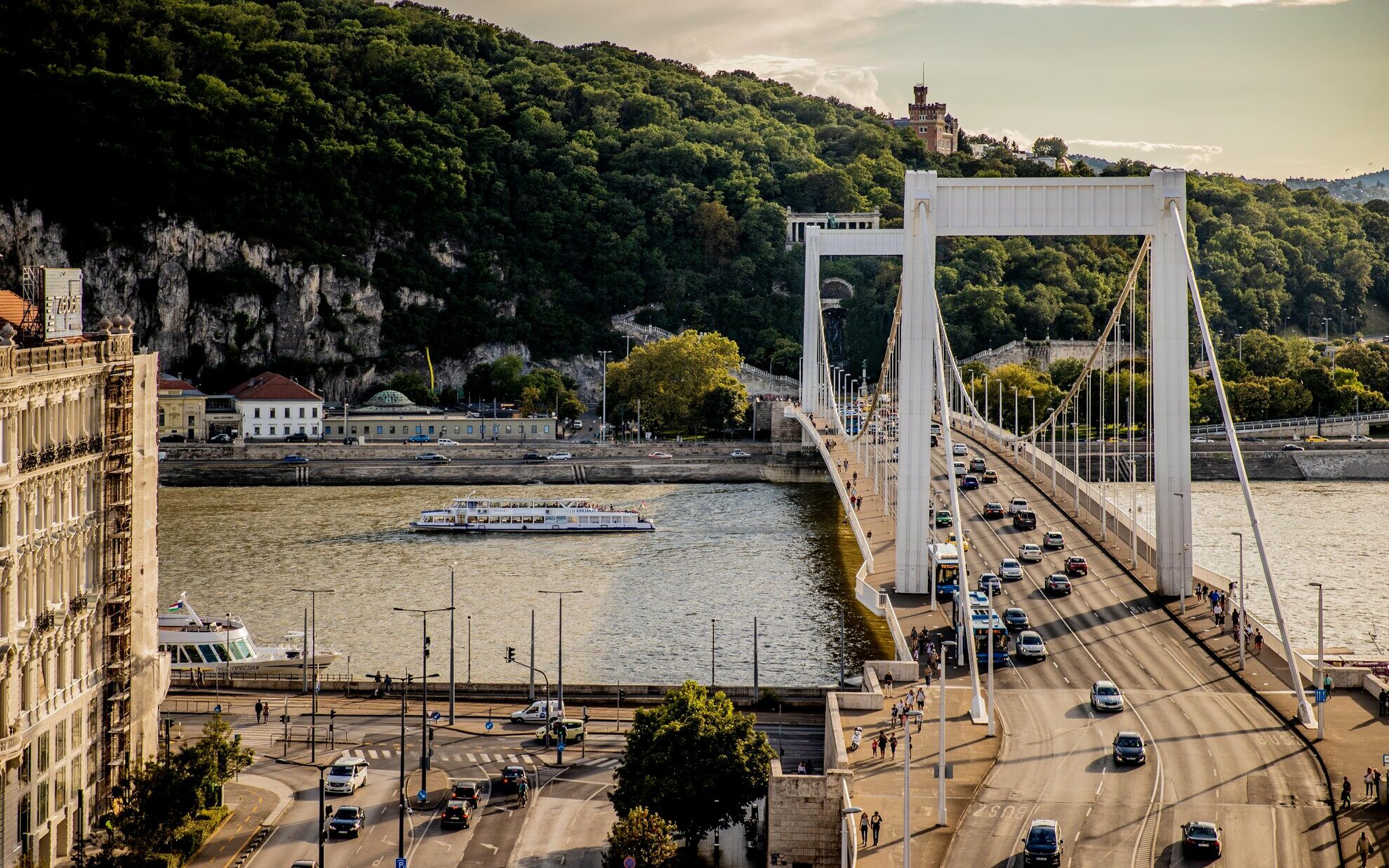
Also, nearby to the bridge, on the Pest side, it leads to some beautiful embankments and also the classy and elegant Váci utca. On the Pest side, you’ll also find Good Spirit Bar, where you can enjoy quality drinks in a pleasant environment. On the opposite side in Buda, the bridge takes you quite close to the Rácz Thermal Baths and also the Rudas Thermal Baths. All-in-all, Erzsébet Bridge probably won’t be your number one choice of bridges of Budapest that ‘must be walked across’, but it’s worth considering that the view from the middle the structure can be just as stunning as from some of the other bridges. Some other famous bridges of Budapest: Margit híd (Margaret Bridge), Szabadság híd (Liberty Bridge), Széchenyi “Lánchíd” (Széchenyi “Chain Bridge Budapest”). In addition to the bridges, you can encounter many other interesting sights in the capital, which you can also visit on the top 3 walks in Budapest.
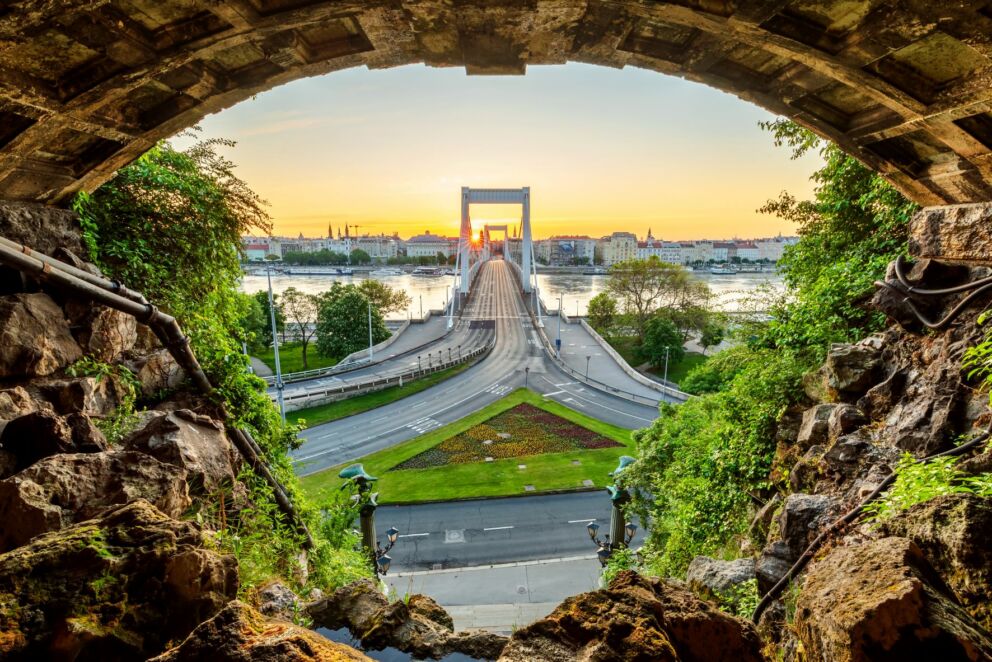
If you want to experience Budapest’s famous clubs nightlife, you’ll find many excellent clubs and bars across the Elisabeth Bridge. For example, Szimpla Kert ruin pub, Grandio Jungle Bar, and even Füge Udvar.
The bridges of Budapest are marvelous. If you want to learn more about these amazing structures, read our article about the topic.
The Erzsébet Bridge is one of the top 100 things you can’t miss in Budapest, make sure to check out the others too!
Chain bridge Budapest – the amazing construction that you have to visit if you are in the city!
FAQ
What is Erzsébet Bridge in Budapest?
Erzsébet Bridge, known as Erzsébet híd in Hungarian, is one of the major bridges in Budapest, connecting Buda and Pest across the Danube River. It was named after Elisabeth of Bavaria, the wife of Emperor Franz Joseph I of Austria. The bridge is notable for its modern design and serves as a vital transportation route in the city, providing stunning views of the surrounding landmarks.
How can I get to Erzsébet Bridge?
Getting to Erzsébet Bridge is easy via public transportation. You can use the metro, trams, or buses that service the area. The nearest metro station is Fővám tér on Metro Line 4. Additionally, the bridge is within walking distance from several popular attractions, making it a great spot to visit while sightseeing in Budapest.
What are the best views from Erzsébet Bridge?
The views from Erzsébet Bridge are breathtaking, especially at sunset. Visitors can see the iconic Chain Bridge, the majestic Buda Castle, and the stunning Parliament Building. The bridge also offers panoramic views of the Danube River, making it an excellent spot for photography and enjoying the city’s skyline.
Is Erzsébet Bridge pedestrian-friendly?
Yes, Erzsébet Bridge is pedestrian-friendly, featuring dedicated walkways for pedestrians and cyclists. This makes it a popular spot for locals and tourists alike to enjoy a leisurely stroll while taking in the scenic views of Budapest. The bridge is well-lit at night, providing a safe environment for evening walks.



